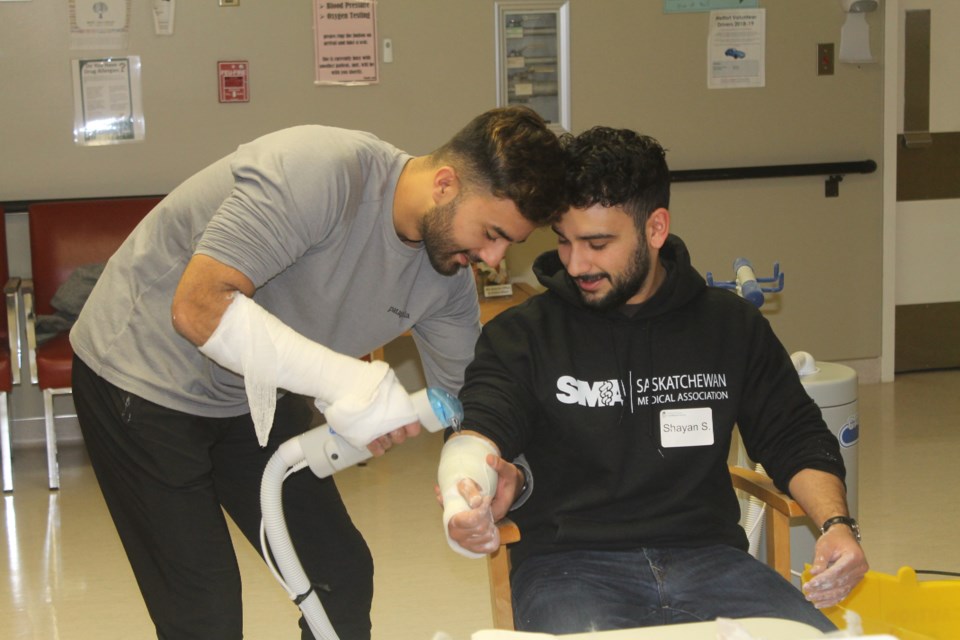MELFORT — The Saskatchewan Medical Association (SMA) brought 45 medical students in the province to the Melfort Hospital to teach them about rural medicine over a weekend.
The trip was part of the roadmap program.
The annual roadmap program serves to expose medical students in the province to rural medical practice and to have them consider rural medicine as a career path.
While this year Melfort was chosen, each year a different community is selected.
The students toured the hospital in the morning, and stopped at various work stations to test their skills. In the afternoon the group headed to Wapiti, before returning to Saskatoon.
First year medical student Shayan Schirazi said the opportunity let him be familiarized with rural practice in a way that was hands-on.
“A lot of the time they talk to us in medical school about rural practice, but you don’t actually get a picture and an understanding unless you see what it’s like,” Schirazi said.
“For me, I’m from Regina and then went to school in Saskatoon. That’s like, city slicker. You don’t really get the picture of rural, and what it means to be in a rural community.”
The scheduled workshops at the hospital included a hospital/clinic tour, suturing, casting and an overview of rural medicine – presented by Dr. Stephanie Nyberg.
Nyberg is an SMA roadmap mentor, where she goes on each tour and teaches the students.
“I kind of help to explain what rural life medicine is all about, what a day in the life is with me, answer their questions and address any of their concerns,” Nyberg said. “I try to promote rural medicine and try to encourage and entice people to choose rural medicine.”
Nyberg said there is a huge need at the moment for rural medicine.
“Not only that, but personally I feel you get so much more flexibility and kind of leeway to do what you want to do. If you want to do all encompassing work in terms of ER work, inpatient work, clinic work, obstetrical care delivering babies. You can do everything and anything.”
Not scheduled on the tour for the students as a Code Blue drill – where someone is suffering from a cardiac arrest.
“That was out of nowhere, I think I became pretty wide-eyed,” Schirazi said. “They did not include that in the schedule, that’s for sure. For a moment I was just confused what was going on.”
He caught on quick that it was a drill to test the students, that they wouldn’t expect medical students to handle a Code Blue.
“I think it probably took a lot of the students by surprise, but it’s also very important for them to be a part of that,” Nyberg said.
“The training lesson is sometimes we don’t know. The patient could be on the ward then all of the sudden they go into cardiac arrest. It’s just to make them aware that’s what happens and that’s a part of our career here.”
Schirazi said he was surprised by the low number of doctors for the Code Blue drill.
“I think it’s surprising how much slack everyone makes up for,” Schirazi said.
In an urban hospital, he is used to expecting 15 to 20 team members.
“Here there were like five or six people, which is interesting to see how many more roles everyone takes on.”




